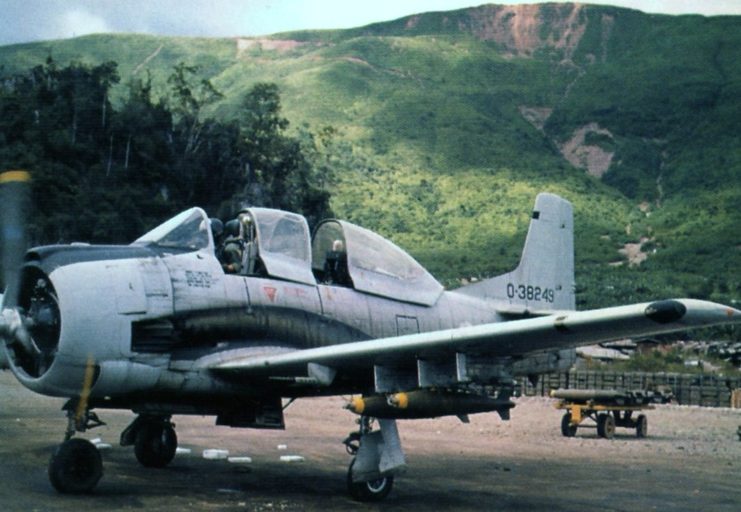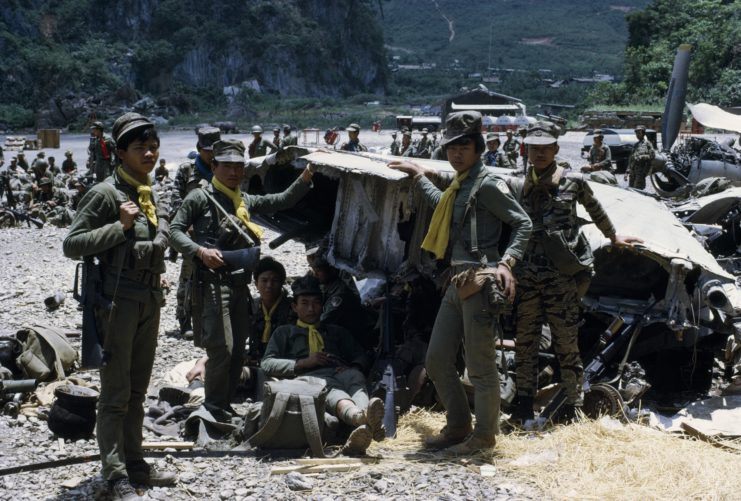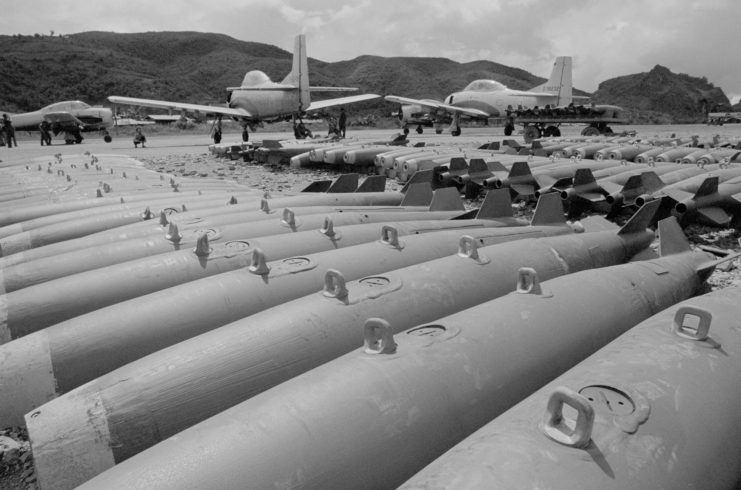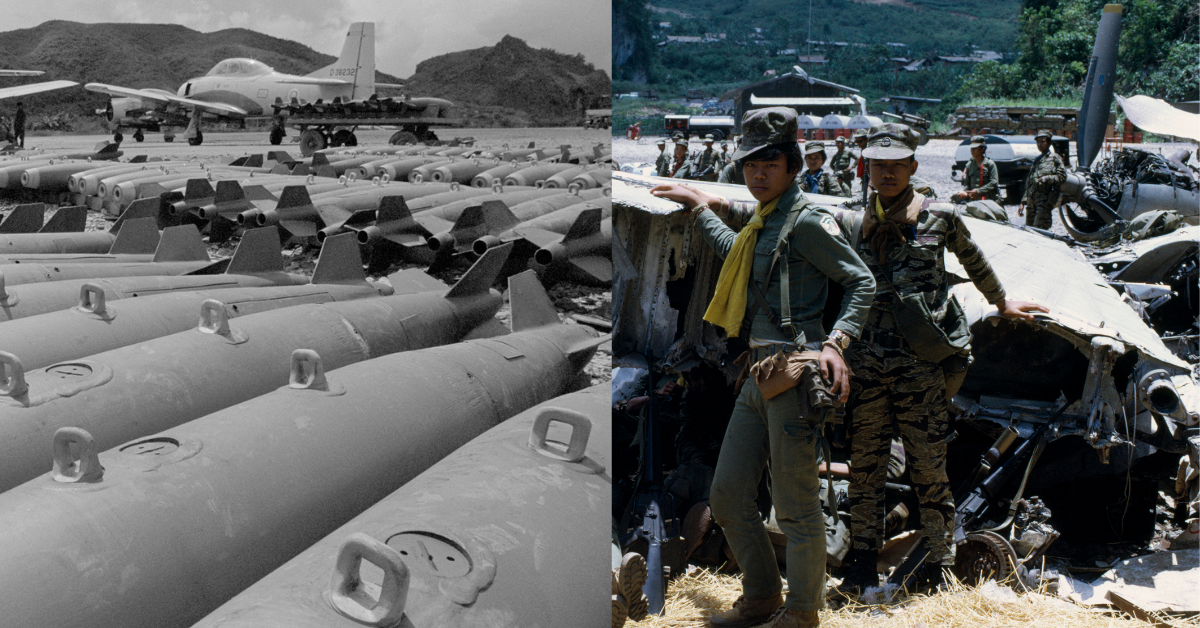Despite strategic bombing being an iconic symbol of the Second World War, Germany, nor any other European country for that matter, holds the title for the most bombed country per capita. That record goes to Laos, a nation bordered by Vietnam, China, Myanmar, Cambodia, and Thailand. During the Vietnam War, Laos would be the setting for a proxy war between the major Cold War superpowers. This war was fought mostly with bombs in a bid to deny North Vietnamese communist troops access to South Vietnam. It would become known as the “Secret War.”
The Secret War

The Secret War was overshadowed by the neighboring Vietnam War and was kept under wraps by the CIA. The countries involved were Thailand, the US, Laos, and North Vietnam.
In 1954 Laos was freed from French control and declared an independent, neutral country. Although the country had now gained independence, its leaders, the Royal Lao Government, faced resistance from the Pathet Lao, a communist political organization that was fighting to be the dominant political power in the country.
The Pathet Lao and their rebellion against the Royal Lao Government were supported and funded by North Vietnam, whose army, the People’s Army of Vietnam (PAVN) was also operating in Laos.
The PAVN and Viet Cong were engaged in a war against the US in Vietnam too and began sending supplies and troops to Vietnam via Laos and Cambodia.
They used the Ho Chi Minh trail, the infamous pathway that ran alongside Vietnam’s western border. This trail was a vital lifeline for the PAVN and Viet Cong fighting in Vietnam, enabling the transportation of supplies, men, equipment, weapons, and other necessary elements for war.

The trail was such an important asset that the US stopped at nothing to deny its use to their enemies.
Both the US and North Vietnam had signed their official recognition of Laos’ neutrality, so for political reasons, a conventional ground war was not a possibility. In 1960, the CIA began guerrilla training for Laotian tribesmen who opposed the Pathet Lao and PAVN. This force grew to a size of about thirty thousand troops, mostly from the Hmong tribe. They stalemated the Pathet Lao and PAVN and carried out attacks on the Ho Chi Minh trail, successfully alleviating the pressure on US forces in Vietnam.
However, the US didn’t stay completely out of the fight in Laos. They fought against the PAVN and Pathet Lao too but from the air.
The US bombing missions against the Ho Chi Minh trail and communist forces in Laos would become the largest bombing campaign in history.
Bombing Laos

The Ho Chi Minh trail was allowing the PAVN and Viet Cong to maintain the war in Vietnam, while communist forces in northern Laos were still battling against US-trained guerrillas. Sending US ground forces into Laos to combat this would have been a political disaster due to Laos’ neutrality. In addition, the landscape and climate meant battles would have been difficult and costly.
The US believed aerial attacks would be the safest way to combat communist activity in Laos. In 1964 the US Air Force began low-profile missions over Laos, but this would morph into the biggest bombing campaign ever carried out.
Much of this would be focused on the notorious Ho Chi Minh trail but the US also targeted areas all over Laos.
Between 1964 and 1973, the US dropped over two million tons of ordnance on Laos. This was achieved over 580,000 missions.
This amount is equal to a plane-load of bombs dropped on the country every 8 minutes, 24-hours a day, for 9 years straight. This relentless pace of bombing was previously unheard of, even dwarfing the scale of strategic bombing seen during WWII.
Despite this, the Ho Chi Minh trail continued in use until the end of the US involvement in the region. Once the US had left, communist forces quickly took control of Laos and persecuted those who previously resisted them, committing human rights abuses against many civilians.
About 10% of Laos’ population had been killed during the war, with another quarter becoming refugees. However, even after the war had ended, its effects had not.
More From Us: Taking K-129: Howard Hughes, the CIA, and the Most Expensive Secret Plot of the Cold War
It is estimated that around a third of the ordnance dropped on Laos failed to operate, littering the landscape with deadly explosives that remain to this day. Over 270 million cluster bombs alone were dropped on the country, with around 80 million failing to detonate.
In total, just 1% of all of these unexploded bombs have been recovered in Laos.
